On 28 February 2002 the Indian state of Gujarat erupted in an orgy of communal violence that left between 1,000 and 2,000 people dead, tens of thousands homeless and caused the destruction of hundreds of places of worship. In the aftermath, over 30,000 people were arrested in connection with the violence but strong criticism of the police and army that was called in to deal with the disturbances soon followed restoration of order.
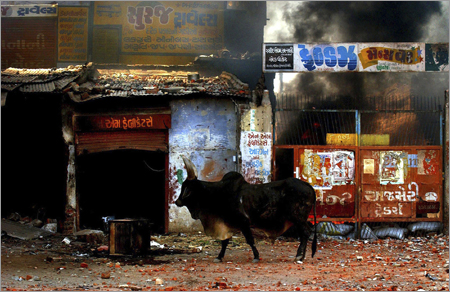
A lone bull walks through the deserted streets of Ahmadabad after rioting has brought a wave of destruction to Muslim neighbourhoods, Ahmadabad, India. February 2002. © Ami Vitale/Panos Pictures
The cause of the rioting was an attack by a Muslim mob on the Sabarmati Express, a train carrying Hindu pilgrims returning from Ayodyha, the place of a much contested religious site claimed by both Muslims and Hindus, as it pulled into the town of Ghodra.
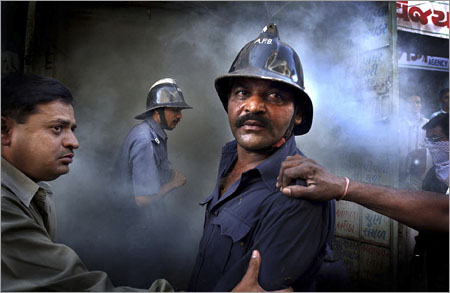
Firemen attempt to put out a rapidly spreading fire in a Muslim neighborhood of central Ahmadabad, India. February 2002. © Ami Vitale/Panos Pictures
The train was set on fire, killing 58 people, mainly women and children. In retaliation, Muslim homes and businesses were attacked by Hindus across the state state.
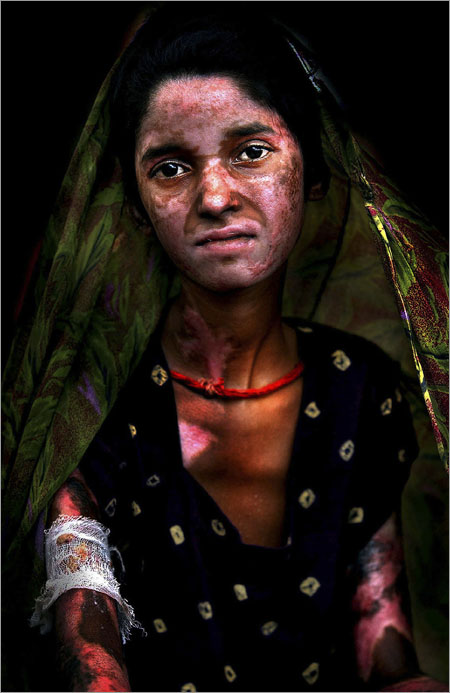
18 year old Shah Jaha Kabir Ali Shaikh, who was burned by mobs of Hindu rioters, recovers inside a refugee camp inside a mosque in Ahmadabad, India. February 2002. © Ami Vitale/Panos Pictures
Though accounts differ widely of what happened over the following days, serious allegations were leveled against the police force for not doing enough to prevent the ensuing violence and, in some cases, taking part in violence perpetrated against Muslims.
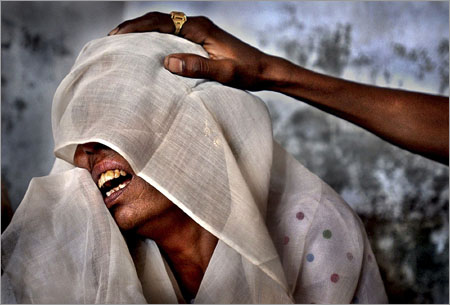
37 year old Shaikh Kulsumbibi, a Muslim whose village of Sardarpur was destroyed in a gruesome attack, weeps as she seeks refuge in another village. Hindus came in the middle of the night and massacred nearly every one of her neighbours and family in a strategically designed plan which involved flooding the exit and then electrocuting those who were not first killed by the firebombs and kerosene. Sardarpur, India. February 2002. © Ami Vitale/Panos Pictures
It is also alleged that the despatch of army units to the area on 1 March 2002 was delayed intentionally. Various government commissions since have been launched to investigate the background and course of the riots and the Chief Minister of Gujarat at the time, Narendra Modi, has been exonerated and re-elected since yet the riots remain a strain on inter-communal relations between Muslims and Hindus in the state.
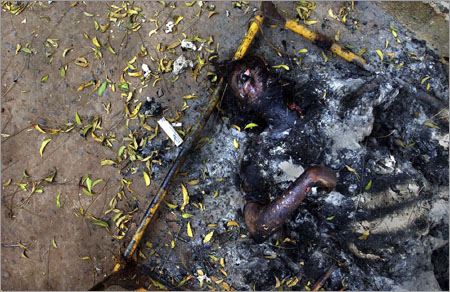
An elderly Muslim woman’s body whose throat was slashed and then set on fire lies outside her home in Ahmadabad, India. February 2002. © Ami Vitale/Panos Pictures
Panos photographer Ami Vitale was in Ahmadabad, the epicentre of the violence, throughout the riots.
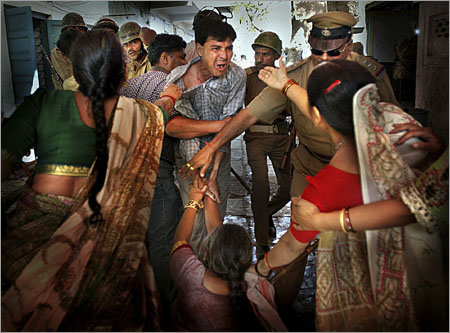
Police drag away a man believed to be instigating violence in central Ahmedabad after angry Hindu mobs went on a spree of vengeance attacks, destroying Muslim shops and homes, and killing many people, in retaliation to a train bombing that killed 58. Ahmadabad, India. February 2002. © Ami Vitale/Panos Pictures
